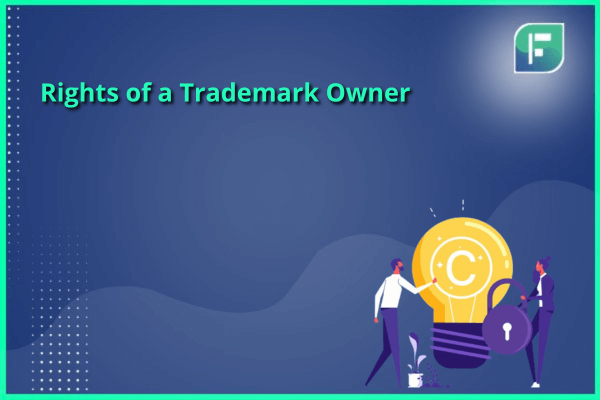A brand symbolizes a unique entity in the domain of intellectual assets, functioning as a visual portrayal involving terms, signs, tags, symbolic characters, patterns, or their amalgamations. The main aim of registering a brand is to distinguish your offerings or services from those of others in your industry or clientele. Preserving this unique marker is supported by the safeguarding coverage of Rights related to Intellectual Property. Owning a brand acts as a safeguard for your commercial ideas, products, or services. In this article, we aim to understand the rights of a trademark owner.
Importance of Trademarks
A trademark registration fulfills various crucial functions for companies, playing a pivotal role in safeguarding their brand image and reputation.
• Legal Protection Against Unethical Practices
One primary function of an emblem of identity is to provide legal protection against unethical activities. Through trademark registration, businesses can safeguard their brand from potential misuse or unauthorized replication by unscrupulous entities.
• Building Market Recognition
Another significant role of an emblem of identity is to build recognition in the market. A unique and easily identifiable emblem of identity helps create a distinct identity for a brand, assisting consumers in identifying and recalling it.
• Differentiation from Competing Entities
An emblem of identity is vital in setting apart your products and services from those of your rivals. It acts as a visual symbol that distinguishes your brand, aiding consumers in making informed choices among various offerings in the market.
Distinctions Between Registered and Unregistered Trademarks
Regarding trademarks, it’s vital to grasp the distinctions between recognized and unrecognized status. The possession and related entitlements of a trademark hinge on its utilization, with significant variations depending on whether it is officially registered.
The initiation of trademark ownership is tied to its use in association with goods or services. Nevertheless, these usage-centric entitlements are confined to a specific geographical region where the goods or services are accessible. To extend and fortify these entitlements nationally, it is recommended to actively register the trademark.
To assert ownership of a trademark, symbols are commonly utilized. Even in the absence of formal registration, a user can signify a trademark using the “TM” symbol. This symbol indicates a declaration of ownership, though the entitlements are generally restricted. In contrast, an owner of a registered trademark is entitled to use the “®” symbol, indicating that the trademark is officially registered, offering more robust legal safeguards and nationwide acknowledgment.
Rights of a Trademark Owner for Unregistered Trademark
Certain significant rights of a trademark owner exist, along with legal actions available under traditional legal principles to safeguard their brand from unauthorized utilization by external entities. If a trademark, identical in a deceptive manner, is employed without authorization, legal measures can be pursued to address the act of misrepresentation.
For unregistered trademarks, the legal options are rooted in traditional legal principles. Legal proceedings for infringement can be commenced against entities involved in unauthorized utilization that might lead to confusion or deception in the market.
Key Factors in Establishing Infringement
To pursue legal action for pass-off, the proprietor must demonstrate several key factors:
1. Acquisition of Goodwill: The trademark owner must establish that they have come to acquire goodwill in the market with the unregistered trademark.
2. Misrepresentation: The owner needs to prove that the defendant’s actions involve misrepresentation, implying a connection between the unauthorised use and the legitimate owner’s brand. This misrepresentation can lead to confusion among consumers.
3. Loss or Likely Loss: To address unauthorised use, the owner is required to substantiate that such usage has either caused or has the potential to cause a tangible loss. This loss may manifest in various forms, encompassing financial harm, harm to reputation, or other adverse consequences stemming from the infringement.
Rights of a Trademark Owner for Registered Trademark
Registering a trademark brings a range of rights of a trademark owner compared to unregistered trademarks. While the registration process can be intricate, the benefits for the owner are substantial. Mentioned are the key rights of a trademark owner associated with a registered trademark:
1. Exclusive Utilization Entitlement:
The proprietor of the officially registered symbol possesses the sole entitlement to employ the symbol for the designated products and commodities as per the registration. In instances involving multiple proprietors, each participant possesses equivalent entitlements, akin to those without registration.
2. Statutory Recourse Entitlement for Violations:
Having exclusive entitlements to the officially registered symbol, the possessor holds legal authorization to pursue statutory remedies for any violations. This grants them the authority to initiate legal proceedings in compliance with stipulated laws against unauthorized utilization of their officially registered symbol.
3. Right to Assign:
A registered trademark owner has the right to transfer ownership through licencing or assignment. This includes the ability to provide valid documentation for such assignments, ensuring legal clarity in the transfer of trademark rights.
4. Right to Register Correction:
The rights of a trademark owner for a registered trademark include the authority to apply for corrections to the register. This includes rectifications related to the name, address, or description of the registered proprietor. Also, the owner has the right to request the removal or correction of entries in the register.
Final Thoughts
The rights of a trademark owner, whether formally recognized or not, are crucial in protecting the identity of a brand. In the case of unregistered brands, safeguarding depends on customary legal entitlements, necessitating evidence of established goodwill and possible harm. On the other hand, owners of formally recognized brands have the advantage of exclusive usage privileges, legal remedies for violations, the option to transfer or permit usage, and the power to rectify the official record. Despite the intricate registration procedure, the extensive privileges granted to formally recognized brand owners underscore the significance of official registration in ensuring the effective protection and administration of brand assets.






